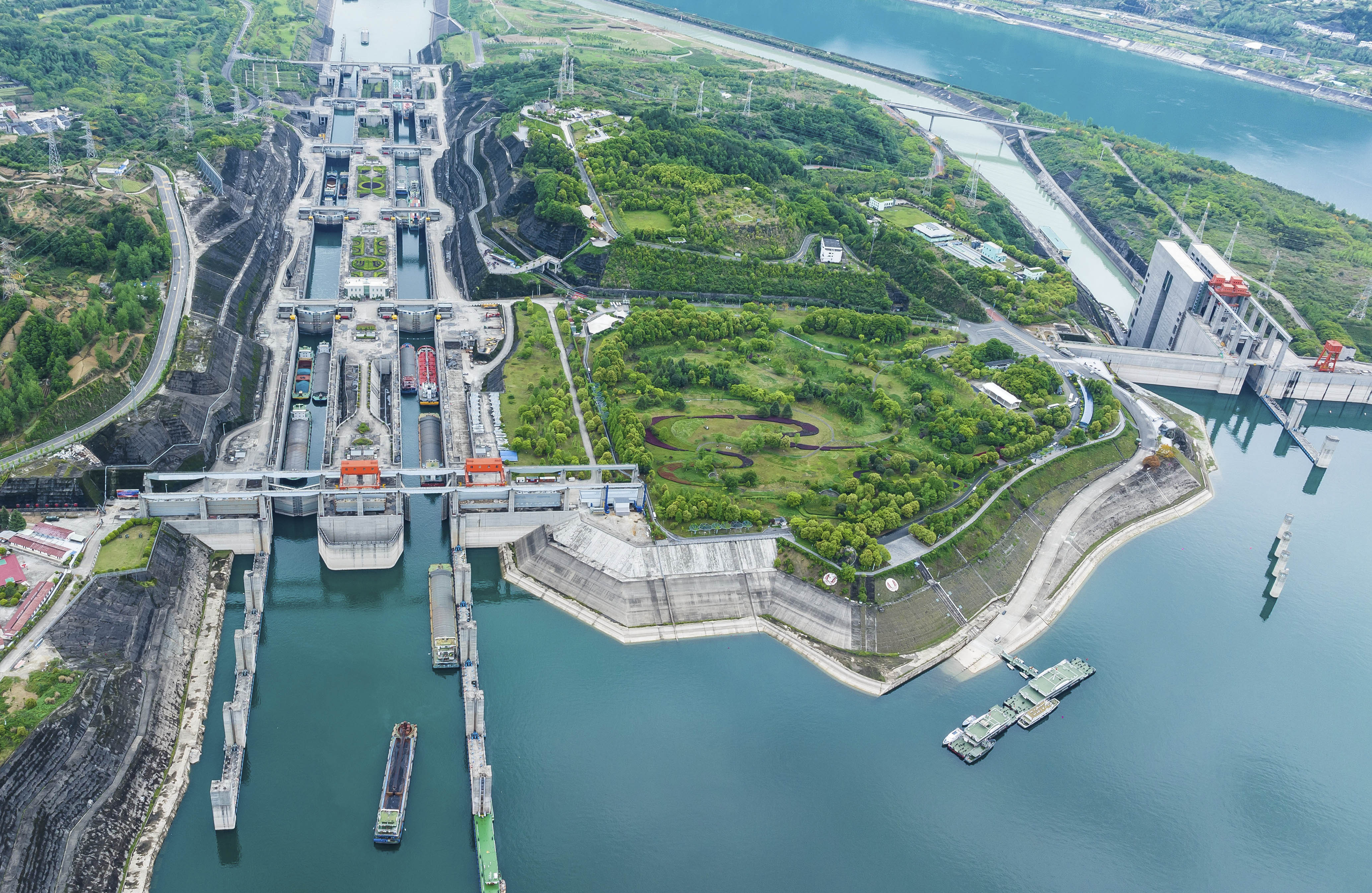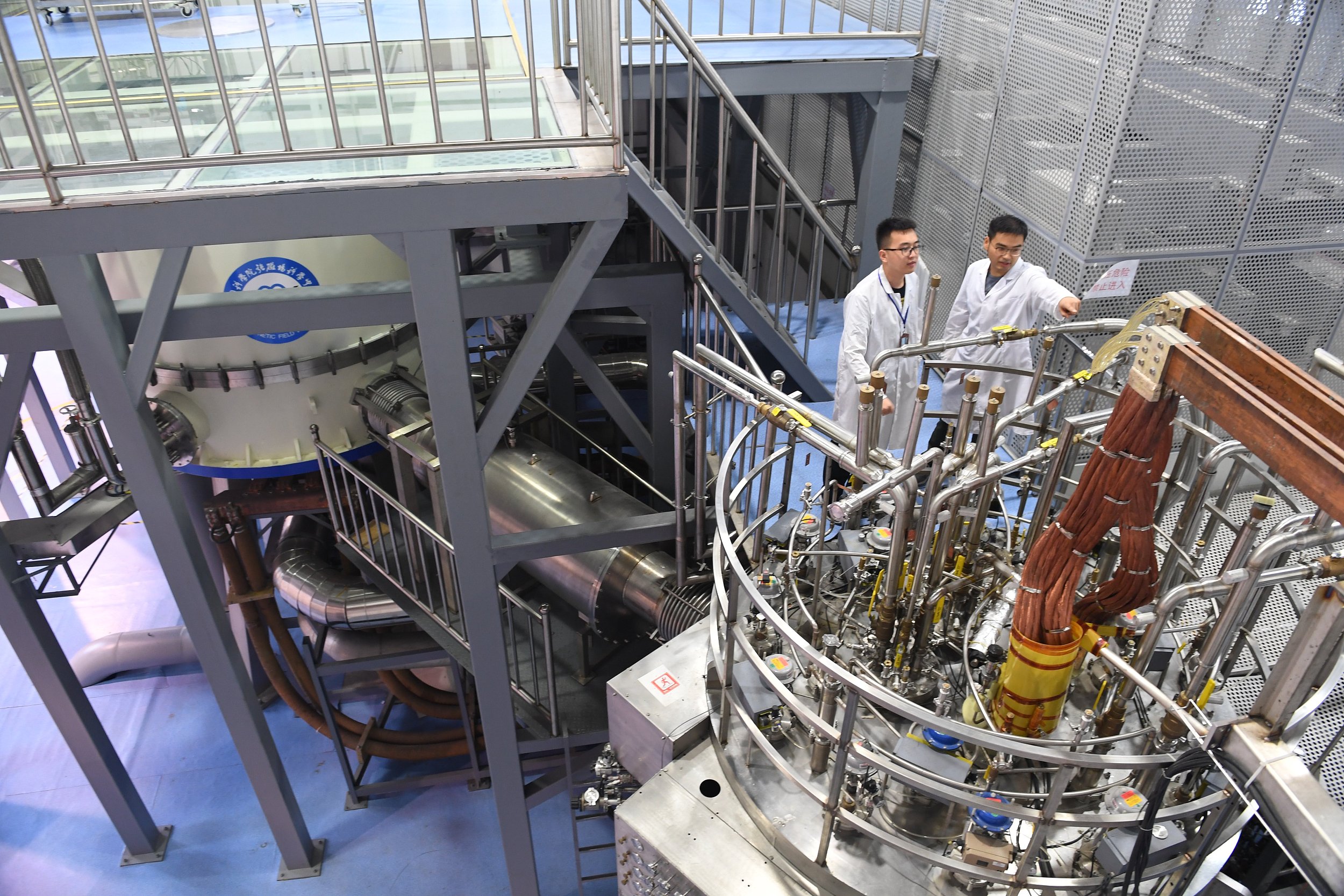Impressive Contributions of Three Gorges Project
Photo shows ships passing through the Three Gorges lock in Yichang, Hubei province. (PHOTO: XINHUA)
By WANG Xiaoxia
Three Gorges Hydroelectric Power Station, or Three Gorges Project, on Yangtze River, serves as a critical water-control system with a range of functions including flood control, electricity generation, shipping and water-resource utilization, according to data released by China Three Gorges Corporation (CTG).
Flood and drought relief
Over the past five years, the Three Gorges Dam has held back a volume of 75.2 billion cubic meters of water during flood seasons.
The Three Gorges Dam is situated at the intersection of the upper and middle-lower reaches of the Yangtze River, near the Jingjiang River, which used to suffer severe floods. With a flood storage capacity of 22.15 billion cubic meters, the project plays a major role in the flood control of the Yangtze River basin.
In the summer of 2020, the Yangtze basin saw its heaviest average rainfall in nearly 60 years. The Three Gorges Reservoir was able to cut the maximum flood peak from 75,000 cubic meters per second to 49,400 cubic meters per second, reducing them by more than a third and greatly easing flood-control pressure in the middle and lower reaches of the Yangtze River. This helped to avoid the relocation of 600,000 people, and the flooding of 490,000 mu (around 32,667 hectares) of farmland, effectively safeguarding people's lives and property, said CTG.
During the dry season, the Three Gorges Reservoir replenishes water in the middle and lower reaches of the Yangtze River, sending 112.7 billion cubic meters of water to middle and lower reaches over the past five years, according to CTG.
Improve waterway conditions
While relieving the impact of natural disasters, the project's water allocation has also improved navigation conditions of the Yangtze River, making it a veritable "golden waterway."
The Chuanjiang waterway, which is the section of the Yangtze River between Yichang in Hubei province and Chongqing, was considered a "heavy danger" in the past because its natural channel was irregular in both width and depth. There were hundreds of rapids along the waterway, causing countless shipwrecks and loss of life, said Liu Hongyin, a captain who spent 60 years working on the river. The situation changed drastically after the completion of Three Gorges Dam, said Liu, as the water rose and the channel widened, a safe 24-hour navigation became reality.
The Yangtze River Channel now utilizes comprehensive digital operation that enables real-time positioning, monitoring and navigation of ships. In the past five years, the Three Gorges locks have facilitated the passage of over 100 million tons of cargo annually, boosting development in the Yangtze River Economic Belt and regions in southwest China.
Green development
As the world's largest hydropower station, the Three Gorges project consists of 34 turbogenerators with a combined generating capacity of 22.5 million kilowatts. Over the past five years, it had generated over 490 billion kWh of electricity, which is equivalent to reducing consumption of coal by around 150 million tons. These efforts have led to a curb of over 400 million tons of carbon emissions, and contributed to the electricity supply in central and eastern China as well as south China's Guangdong province.
Apart from green power, the Three Gorges project acts as a key eco-environmental regulator. A series of projects have been carried out to build an ecological barrier for the Yangtze River, including water pollution prevention and control, natural forest protection, protection of the Yangtze River shelterbelt, water and soil conservation in the Yangtze upper reaches, conversion of farmland to forest, and construction of green belt around the reservoir.
The ecological conservation efforts have effectively promoted the growth of fish resources in the Yangtze River and led to the revival of rare plant species in the river basin. Over the past five years, CTG has put a total of 864 species of rare plants under ex-situ protection, bred 175,000 excellent seedlings, and returned 50,000 rare and endangered plants to the wild.
Improvements to the ecological environment and waterway conditions have led to an increase in local tourism. In the past five years, the Three Gorges Dam resort has welcomed more than 10 million visitors, according to CTG.



